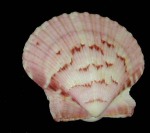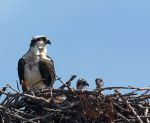 A salt marsh is the habitat where freshwater (from rivers and lakes) mixes with the saltwater (from the ocean). The salt marshes that I am most familiar with have tall cordgrasses near the water’s edge. Usually, it is a mix of two types of cordgrass, Spartina alterniflora and Spartina pattens. Away from the water’s edge is a mix of woody shrubs, including bayberry (very fragrant).
A salt marsh is the habitat where freshwater (from rivers and lakes) mixes with the saltwater (from the ocean). The salt marshes that I am most familiar with have tall cordgrasses near the water’s edge. Usually, it is a mix of two types of cordgrass, Spartina alterniflora and Spartina pattens. Away from the water’s edge is a mix of woody shrubs, including bayberry (very fragrant).
The interesting thing about the cordgrasses is that the entire marsh ecosystem depends upon them to die. The dead cordgrasses fall to the ground to build a base for mud flats, in between the other living plants. What happens next is that layers of peat will continually form on each new level of cordgrass, and protect the entire salt marsh from flooding over.
Another important contribution (and the reason I think salt marshes to be more valuable than oceans themselves) is that salt marshes are considered the nursery ground for many saltwater fish species. The saltwater fish travel into the freshwater to spawn. The eggs are protected in the calmer waters of rivers, creeks, and streams. Once they hatch the young-of-year grow up in salt marsh before heading to the ocean as adults.
For more information, I highly recommend The Life and Death of a Salt Marsh by John and Mildred Teal. (1971, Ballantine Books)
Image (c) National Marine Fisheries Service.

















What people are saying …